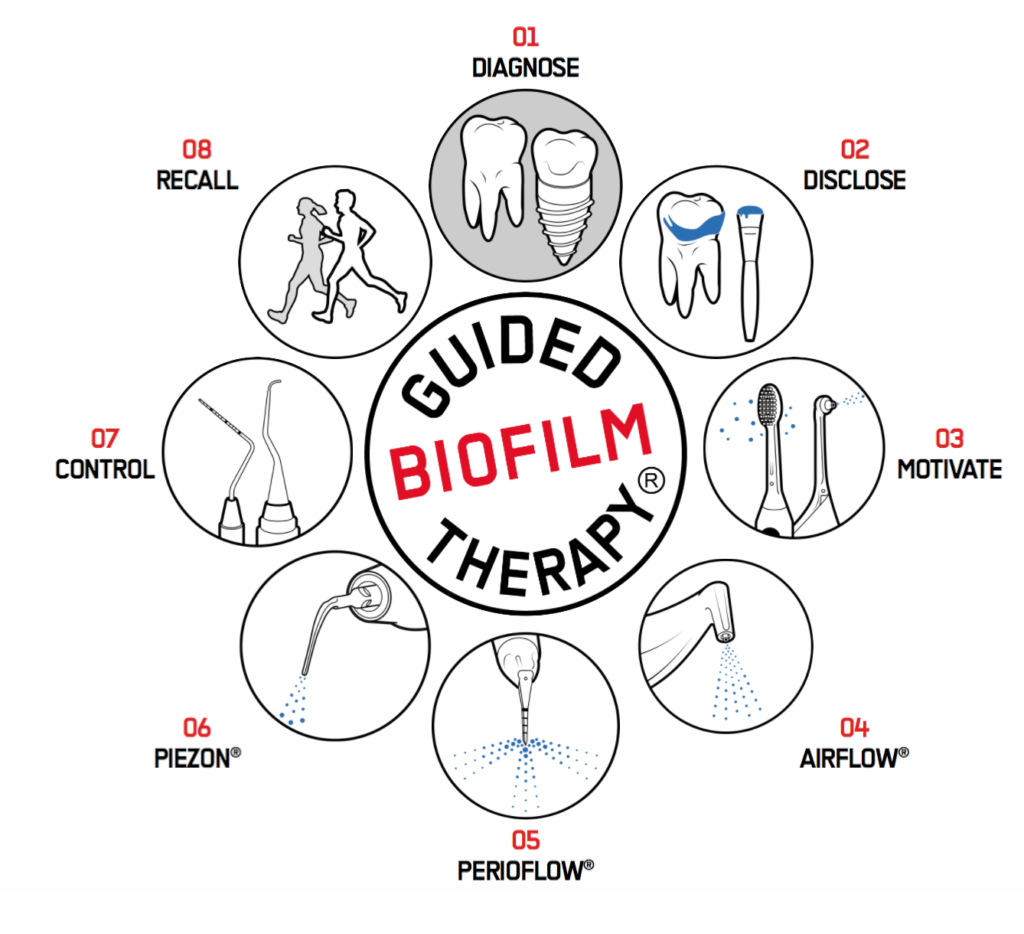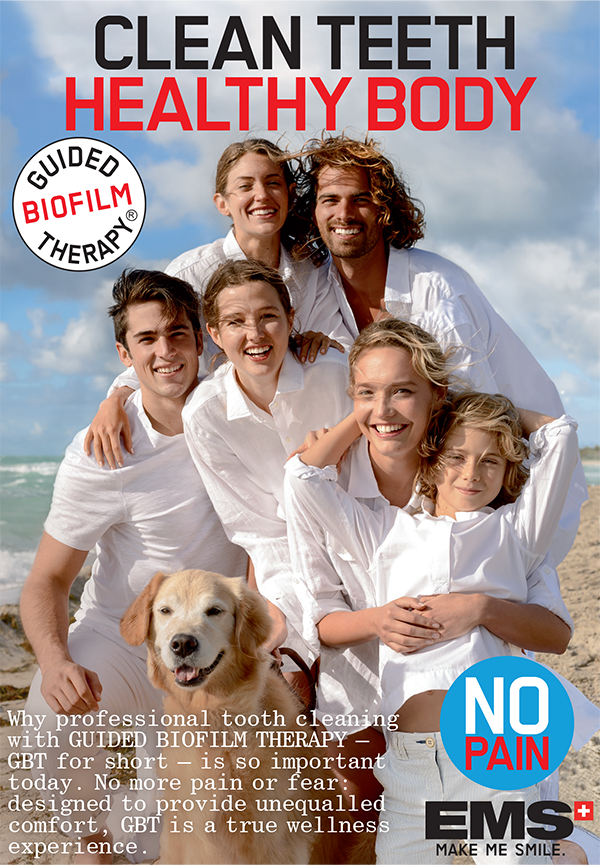Guided Biofilm Therapy (GBT)
Professional hygiene cleaning and gum disease management is a comfortable process with Guided Biofilm Therapy (GBT).
What is GBT?
Guided Biofilm Therapy (GBT) is a systematic approach to removing biofilm - the colourless, bacteria-laden film that adheres to teeth and causes cavities, gum disease and implant infections. Removing biofilm with GBT is minimally invasive, modern, and backed by decades of scientific study and experience. GBT's polishing and scaling technology is suitable for all ages and dental situations.
GBT comes with patented tools and devices that effectively remove debris on teeth. It offers several benefits, including reduced treatment times and the highest level of comfort for patients.
We’re pleased to offer GBT at Wing Dental in Peace River, Alberta. Contact us today to know more about this oral hygiene technology.
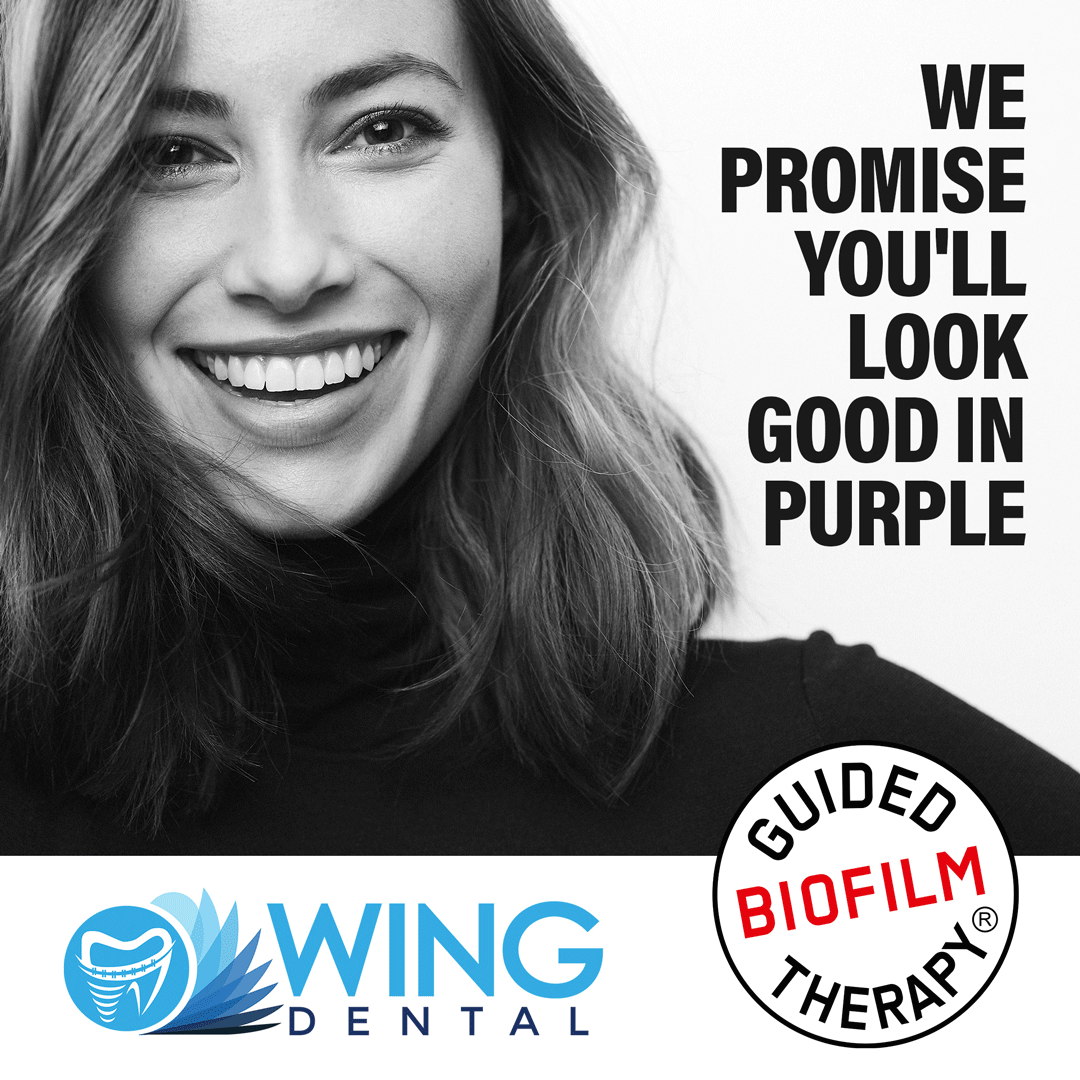
What are the steps involved in GBT?
- Assessing and controlling infection
Your dentist performs a caries risk assessment. They also evaluate your implants or any dental appliance you have. The soft tissue must be in good condition, and there should be no pus, so your dentist can use the AirFlow® and PerioFlow® technology.
Once you’re all set for the procedure, you rinse your mouth with the BacterX mouthwash to minimize bacterial load in the mouth, reduce aerosol contamination, and protect both you and your dental team.
You also wear OptraGate®, a single-use, latex-free lip and cheek retractor. It’s comfortable to wear, flexible, and provides increased visibility and accessibility to your mouth.
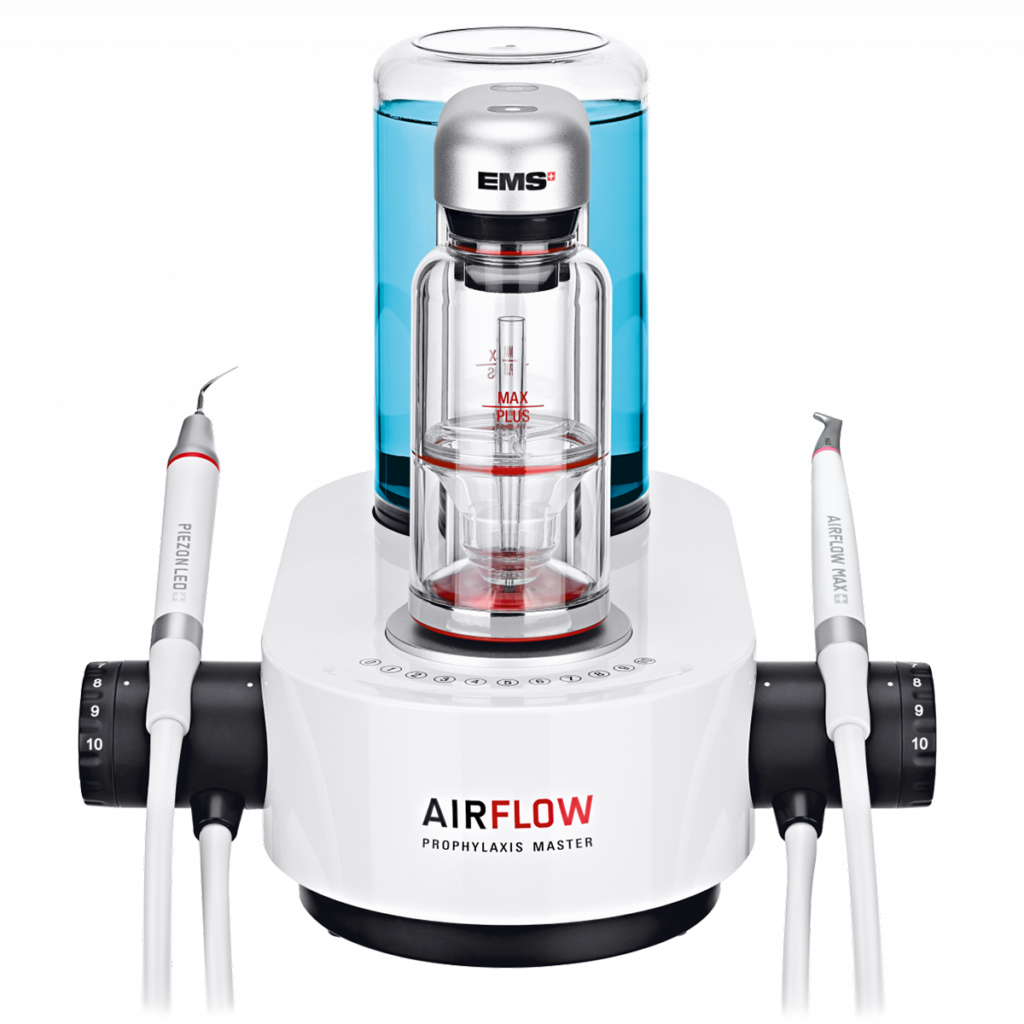
- Making biofilm visible
The second step is making biofilm visible using a harmless dye called the EMS Biofilm Discloser.
The dye stains plaque as it's applied to teeth, making the latter easier to see. Without the dye, it's hard to spot debris on the enamel because it’s colourless. The dye also allows your dentist or hygienist to see where to apply the AirFlow® technology.
Getting the coloured part removed means the biofilm is also successfully removed.
- Raising awareness
During the disclosure step, you see areas of the teeth that can be hard to clean. You see photos of your mouth before the procedure, allowing you to track your progress. This can help motivate you to work with your dental team to improve your oral health further.
- Applying AirFlow® Max
AirFlow® is an all-in-one cleaning and polishing device. It's applicable for natural teeth, implants, and dental restorations. And there’s no need to remove braces before the procedure.
The AirFlow® is a handpiece that gets rid of calculus above and up to 4mm below the gumline. It’s also suitable for tongue cleaning. Remaining stains, such as pigmentations from coffee and smoking, are removed with the help of the AirFlow® Classic Comfort Powder.

Unlike rubber cups and polishing paste, the AirFlow® can clean deep fissures, misaligned areas, orthodontic brackets, and below crown margins. It’s minimally invasive, so it helps preserve the natural tooth structure, soft tissue, and dental restorations.
- Using PerioFlow®
The PerioFlow® is for gum pockets 4 mm up to 9 mm deep. It uses a handheld device with a specialized tip suitable for periodontal therapy.
Although it targets deep pockets, it remains minimally invasive. This reduces sensitivity throughout the procedure.
It also preserves the cementum, which covers the roots of the tooth, and the dentin, the layer of the tooth beneath the enamel and cementum.
- Removing remaining calculus
The next step involves the use of Piezon® technology, which focuses on pockets deeper than 10 mm. The procedure can also target calculus up to 3 mm below the implants.
The Piezon® has ultrasonic tips that remove tartar while staying gentle to the enamel and gums. Its dynamic response feature allows for a safe, precise, and pain-free experience.
It also reduces the need for several instruments as it can remove up to 95% of deposits above and below the gum line.
- Final checking
Decay may not be visible before the cleaning procedure due to the deposits that cover them.
After the GBT, your dentist will be able to see these imperfections better. These are the target areas during the quality control, which is the 7th step. Calculus is fully removed, and fluoride is applied to your teeth.
Polishing is no longer necessary because of the earlier steps that do it at once with cleaning. Your dental team also takes photos of your smile, so you can compare the before and after results.
- Scheduling follow ups or recall
Your dentist recommends a follow-up schedule depending on your risk assessment. This is also a great time to discuss your concerns with them.
Regular dental hygiene cleanings can shorten your future appointments. You may be able to skip other steps if you no longer need them.
The usual frequency is twice a year or every 6 months. You need to visit more often if you have gum disease, an orthodontic appliance, or are expecting.
Benefits of the Guided Biofilm Therapy
- Effective. The GBT is a tried-and-tested technology that guarantees effective biofilm removal. Developers focused on result quality during the design process. The concept isn’t only about boosting oral health. It's also about making patients feel good.
- Safe. The GBT is minimally-invasive. It’s tough on calculus but gentle on soft tissues, teeth, and dental restorations. Even children can undergo the procedure. GBT also reduces the need for several instruments during professional hygiene cleanings.
- Comfortable. The procedure cuts dental chair time, which can benefit young or anxious patients. It uses air polishing technology to minimize the discomfort associated with typical dental cleaning procedures.
- Thorough mouth cleaning. Biofilm or bacterial deposits on the surfaces of the teeth are tough to spot. But since GBT uses dye to make them more visible, your dentist can target and remove them more easily. The technology can remove buildup even in deep pockets.
We’re thrilled to be providing this service to the Peace River community, and we’re more than happy to show you how it works.
Discomfort and anxiety are common patient complaints, and we understand why. Guided Biofilm Therapy may be for you if the sound of dental instruments or the scraping motion during hygiene cleanings make you feel uneasy.
Take the first step to a better dental experience. Call us today at (780) 624-9464 to learn more about how GBT works.
Results
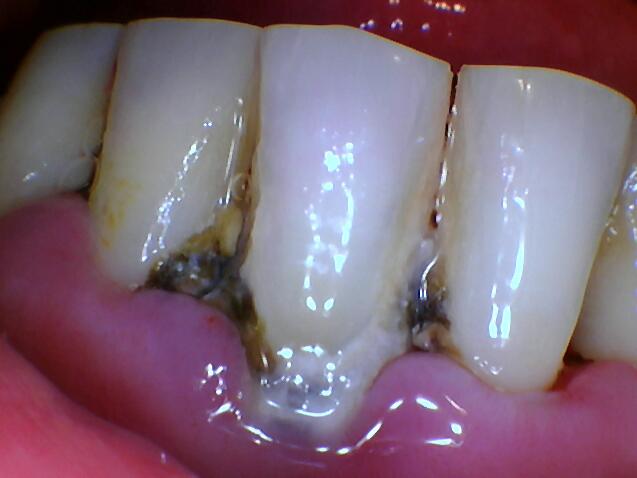
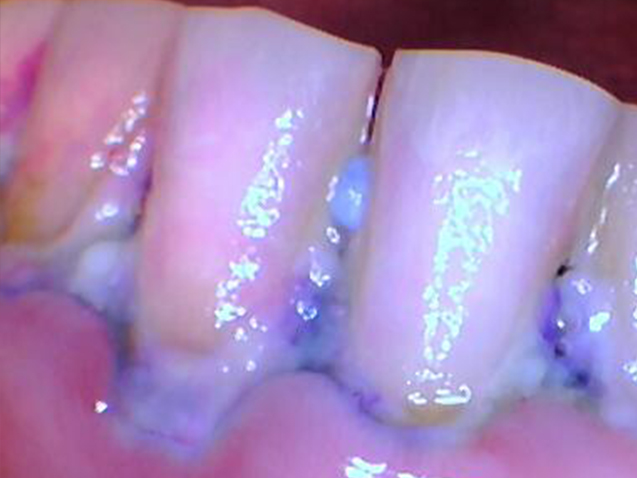
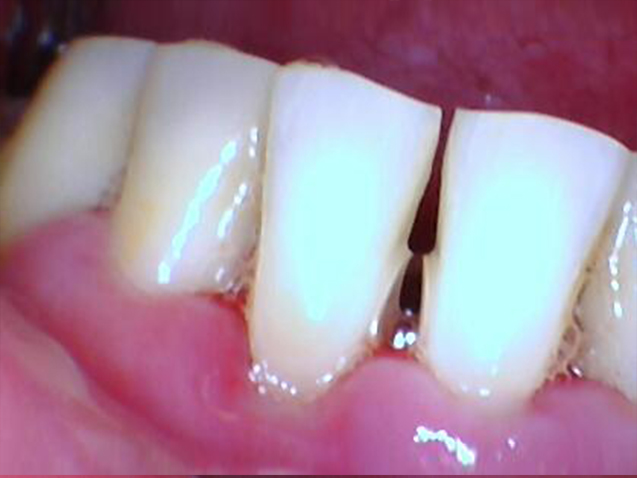
Book your appointment today (780) 624-9464(WING) or online here.
© 2025 Wing Dental and H-cube Marketing, www.DentalGrowthStrategies.com. All Rights Reserved.
